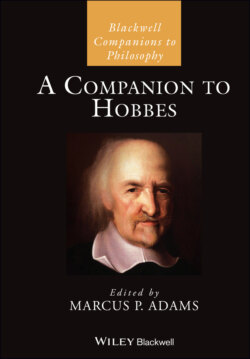Читать книгу A Companion to Hobbes - Группа авторов - Страница 51
3.3 Conclusion
ОглавлениеHobbes’s mathematical program reached its apogee with the publication of De corpore. Wallis’s Elenchus was such a devastating rebuttal that it moved Christiaan Huygens to wonder why he had bothered to expose Hobbes’s mathematical shortcomings in such detail and at such great length.14 Hobbes never admitted substantive or conceptual errors in his mathematics, and as he continued to publish a stream of works in defense of his claims to mathematical glory he became a laughing stock. By 1662 Huygens could report that “through his frequent mistakes, he has so diminished his credit with everyone, that almost as soon as they see a new problem propounded by Hobbes, they declare that a new ψευδογράθημα has appeared” (Huygens 1888–1950, 2:537). An examination of the record shows the justice of Huygens’s judgment: Hobbes’s mathematical errors were so fundamental that they generally could not be glossed over with a reinterpretation or mended by modification (Jesseph 1999, Appendix).
The desperate state of Hobbes’s mathematical program becomes clear when we note that his quadratures and other putative results are refuted by elementary trigonometric calculation. Thus, the original quadrature in chapter XX of De corpore gives a value for π in excess of 3.1419, which exceeds the bounds established by Archimedes. Although Hobbes initially accepted the validity of such trigonometric refutations,15 he eventually decided that mere “algebraic” calculation could have no bearing on the validity of a purely geometric result because the algebraic multiplication of numbers is fundamentally distinct from the geometric drawing of lines into lines. By 1666 Hobbes was moved to complain in PRG chapter 21 that his quadrature in De corpore was demonstrated “as manifestly as any proposition in Euclid,” but “as soon as it first appeared our professors of mathematics (moved by great anger, while others who shared their opinion heaped praises upon them) attacked this [result], which has been sought with such industry by the greatest geometers of every era” (OL 4.449). In defense of his efforts Hobbes announced:
This was opposed by the said professors, in part from the tables of sines, tangents, and secants, and in part from the authority of Archimedes. Yet because those tables were constructed by the multiplication of lines by numbers (whose product they falsely computed as a number of squares), and by the extraction of roots from those squares (which roots they falsely computed as a number of lines), the argument taken from those tables has no refutative force. And since Archimedes himself demonstrates his dimension of the circle by the extraction of roots, his authority need not prevail in this matter.
(OL IV.450–1)
Doggedly following this line of thought, Hobbes concluded in PRG chapter 23 that “the greater part of the propositions that depend on Proposition 47 of Book I of Euclid (and there are many) are not yet demonstrated. Second, the tables of sines, tangents, and secants are entirely false” (OL IV.462–3). Proposition 47 of Book I is the Pythagorean Theorem, whose chance discovery supposedly inspired Hobbes’s love of geometry. But to defend his claims to geometric glory, he found himself forced to abandon it. This, more than anything else, shows just how poorly Hobbes fared in his mathematical exploits.
